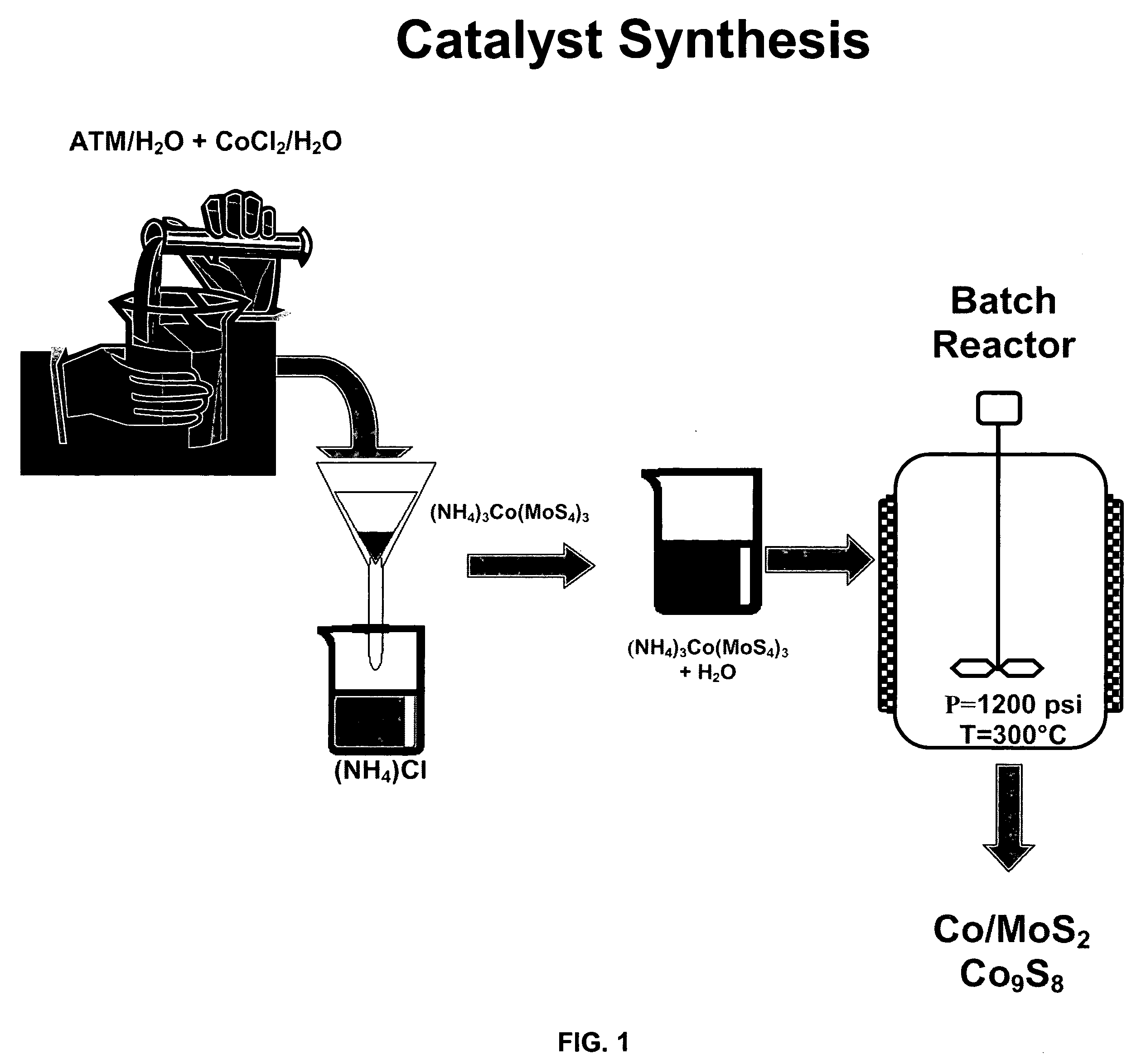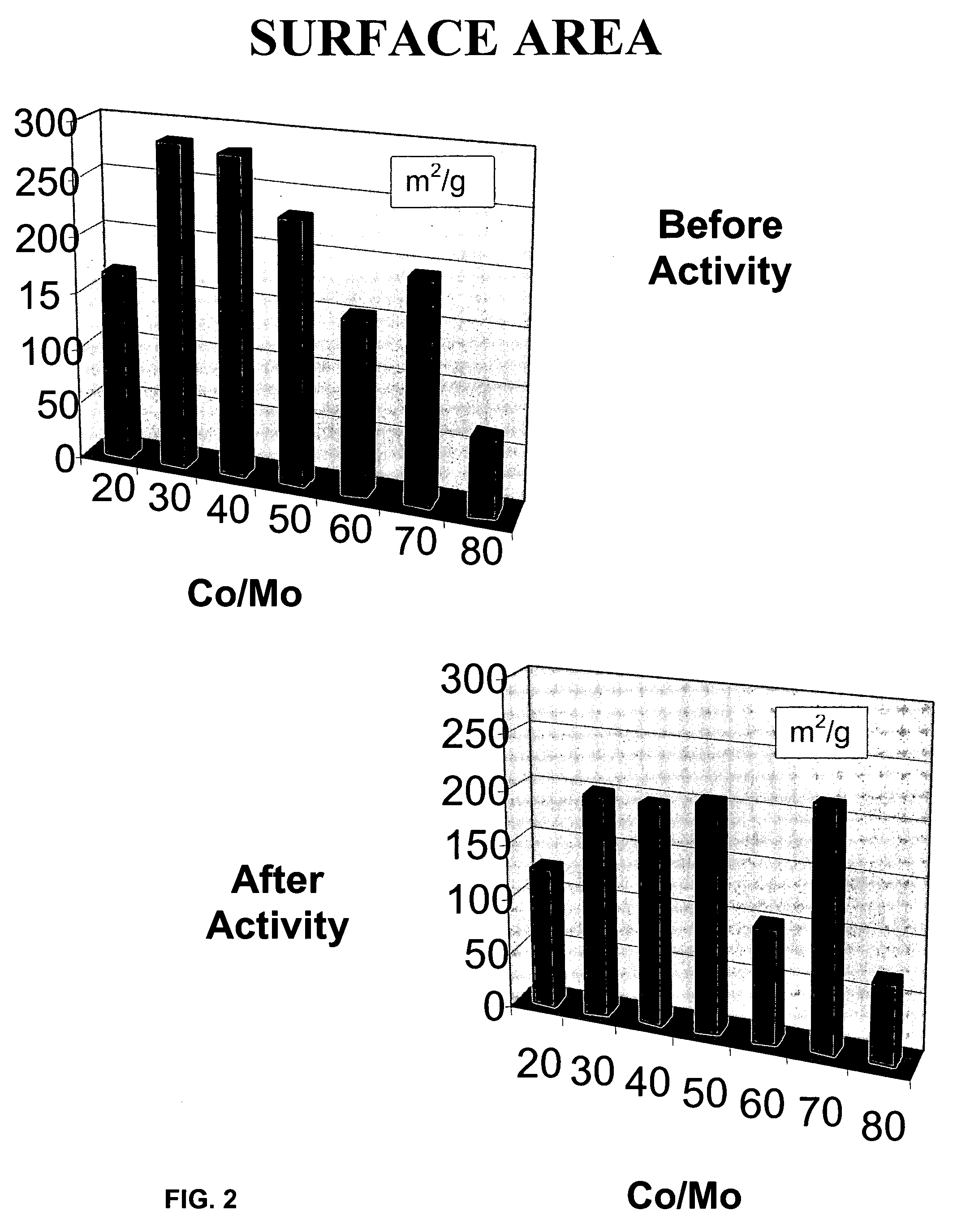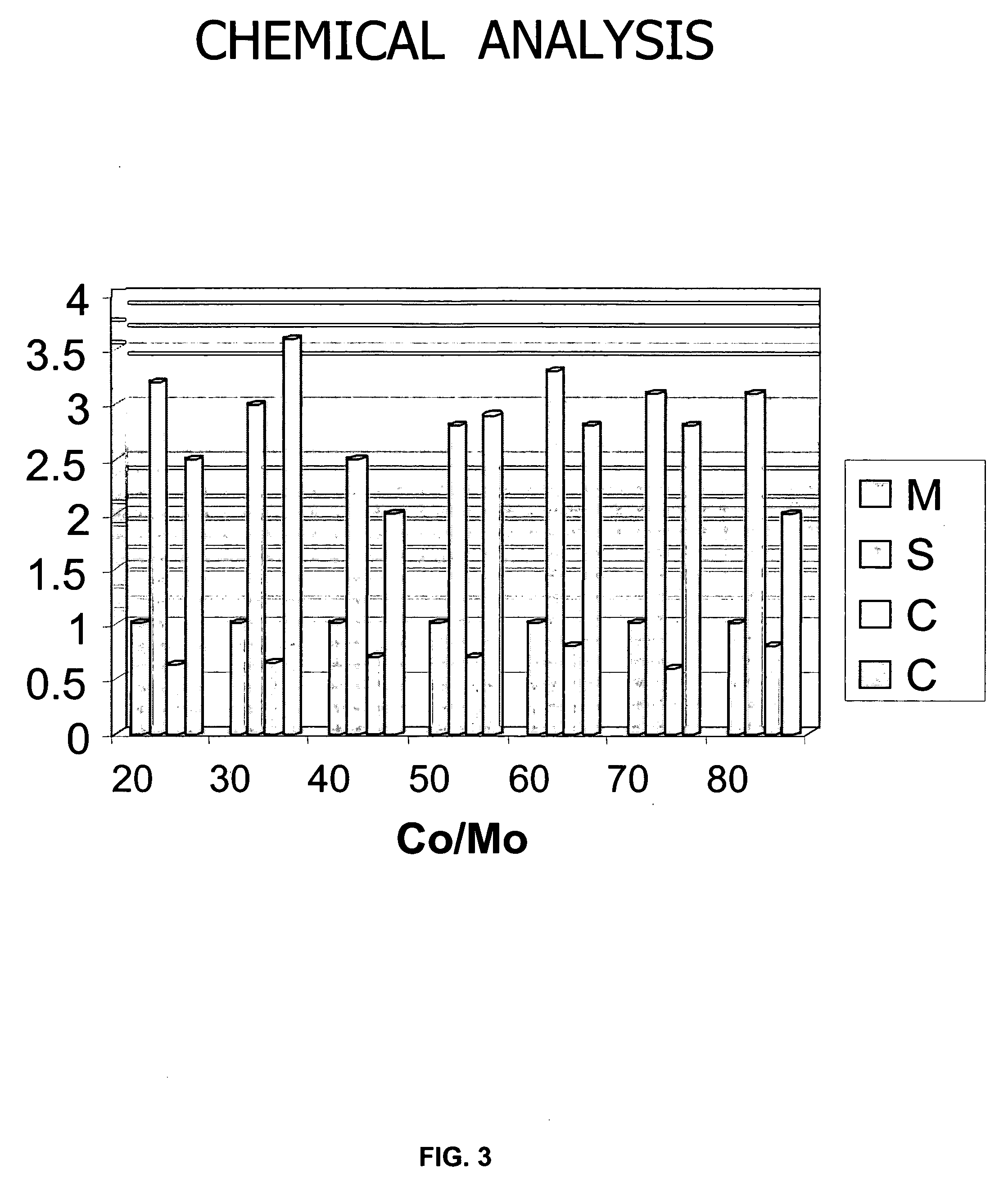Molybdenum sulfide/carbide catalysts
a technology of molybdenum sulfide and carbide, which is applied in the field of catalysts, can solve the problems of affecting the catalyst product, affecting the rate of decomposition, and the process is less clean, so as to increase the catalytic activity and stability
- Summary
- Abstract
- Description
- Claims
- Application Information
AI Technical Summary
Benefits of technology
Problems solved by technology
Method used
Image
Examples
example 1
Catalytic Activity Determination
[0074]The HDS of DBT was carried out in a Parr model 4522 high-pressure batch reactor. One gram of catalyst was placed in the reactor with the reagents (5% vol of DBT in decaline). The reactor was then pressurized to 3.1 MPa with hydrogen and heated to 623K at a rate of 10 K / min. After the working temperature was reached, sampling for chromatographic analysis was performed during the course of each run to determine conversion versus time dependence. Reaction runs averaged about 5 h. The reaction products were analyzed using a Perkin Elmer™ Auto-system gas chromatograph with a 6 ft long, ⅛ inch packed column containing OV-3 (phenyl methyl dimethyl silicone, 10% phenyl) as a separating phase.
[0075]The main reaction products from the HDS of DBT are biphenyl (BIP) and phenylcyclohexane (PCH). Selectivity for the main reaction products (BIP, PCH) was determined for MoS2 and promoted MoS2 catalysts prepared for each precursor. Selectivity was calculated for...
example 2
[0078]This example shows the first step—the substrate formation step—of Method A in which an MoS2 substrate is formed from ammonium thiomolybdate (ATM) under hydrothermal conditions.
[0079]Ten grams of ATM were added to 75 mL of water, the solution was placed inside a high-pressure reactor at room temperature, the reactor was purged two times with flowing hydrogen and then pressurized to 20 psi with the same hydrogen gas. The temperature was raised to 300 C and the pressure was increased to 1300 psi. These conditions were maintained for two hours. The reactor was depressurized and the MoS2 material was recovered from the reactor and washed with isopropanol. The MoS2 unpromoted catalyst was characterized using techniques XRD, EDS, SEM and BET.
[0080]The XRD pattern showed poorly crystalline structure. The SEM micrographs showed fine and uniform powder particles. The BET results indicated 169 m2 / g of surface area before the HDS of DBT reaction.
[0081]After the catalytic activity reaction...
examples 3 – 6
Examples 3–6
[0082]Examples 3–6 demonstrate the effect of various promoters impregnated by applying the second step of Method A on the final properties (after applying the third step of Method A, i.e., the sulfidation step) of the MoS2 catalysts derived from ATM.
[0083]The preparation of MoS2 support was identical to that of Example 2 (first step of Method A). In the second step, the MoS2 support was impregnated with a solution water of MCl2 or M(NO3)2 salts at 20 wt % of M as promoter, where M=Co, Ni, Ru and Fe. The material was dried at 120° C. in an oven for 1 hour. After drying, it was placed in a tube furnace and heated at 400° C. for two hours in H2S / H2 (50% / 50%) flow (third step). The M / MoS2 catalyst was characterized by several techniques XRD, EDS, SEM and BET.
[0084]The XRD pattern showed the characteristic poorly crystalline structure. The SEM micrographs showed fine and uniform particles. The BET results for the Co / MoS2 catalyst indicated 29 m2 / g of surface area before the r...
PUM
| Property | Measurement | Unit |
|---|---|---|
| temperatures | aaaaa | aaaaa |
| temperatures | aaaaa | aaaaa |
| pressures | aaaaa | aaaaa |
Abstract
Description
Claims
Application Information
 Login to View More
Login to View More - R&D
- Intellectual Property
- Life Sciences
- Materials
- Tech Scout
- Unparalleled Data Quality
- Higher Quality Content
- 60% Fewer Hallucinations
Browse by: Latest US Patents, China's latest patents, Technical Efficacy Thesaurus, Application Domain, Technology Topic, Popular Technical Reports.
© 2025 PatSnap. All rights reserved.Legal|Privacy policy|Modern Slavery Act Transparency Statement|Sitemap|About US| Contact US: help@patsnap.com



